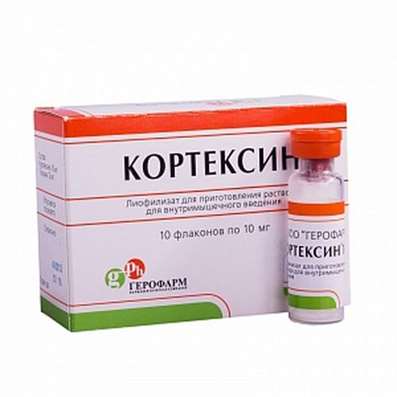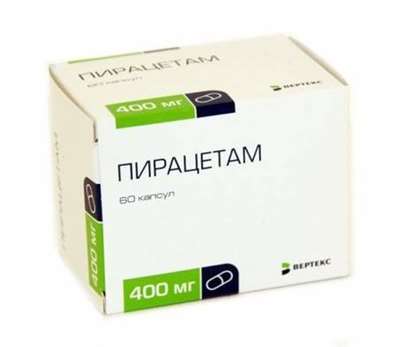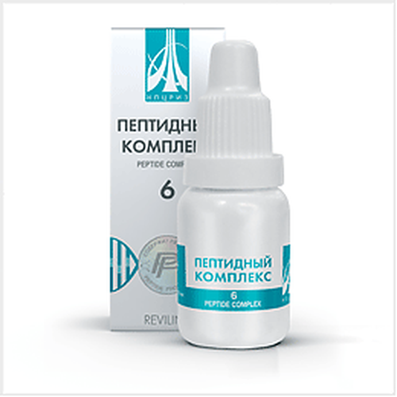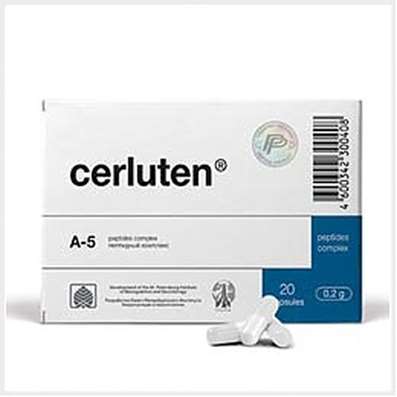Instruction for use: Pramipexole-Teva
I want this, give me price
Dosage form: tablets
Active substance: Pramipexole*
ATX
N04BC05 Pramipexole
Pharmacological groups:
Dopamine receptor agonist [Dophaminomimetics]
Dopamine receptor agonist [Antiparkinsonian means]
The nosological classification (ICD-10)
G20 Parkinson's disease: A trembling paralysis; Idiopathic Parkinsonism; Parkinson's disease; Symptomatic Parkinsonism
Composition
Tablets - 1 table.
active substance: Pramipexole dihydrochloride monohydrate 0.125 mg; 0.25 mg; 0.5 mg; 1 mg
Auxiliary substances: mannitol - 35.185 / 70.37 / 140.74 / 140.24 mg; MCC - 18/36/72/72 mg; Sodium carboxymethyl starch - 3/6/12/12 mg; Povidone K25 - 1.8 / 3.6 / 7.2 / 7.2 mg; Silicon dioxide colloidal - 0,3 / 0,6 / 1,2 / 1,2 mg; Magnesium stearate - 0.57 / 1.14 / 2.28 / 2.28 mg; Sodium stearyl fumarate - 1.02 / 2.04 / 4.08 / 4.08 mg
Description of dosage form
Tablets, 0,125 mg: white or almost white round flat, with a bevel. On one side - engraving "93", on the other - "P1".
Tablets, 0.25 mg: white or almost white round flat, with a bevel. On one side - engraving "93", on the other - the risk and engraving "P2" on top and bottom of the risks.
Tablets, 0.5 mg: white or almost white oval biconvex. On one side - the engraving "8023", on the other - the risk and engraving "9" and "3" on the left and right of the risks.
Tablets, 1 mg: white or almost white round flat, with a bevel. On one side - engraving "93", on the other - the risk and engraving "8024" on top and bottom of the risks.
Pharmachologic effect
Mode of action - antiparkinsonian, dopaminergic.
Pharmacodynamics
Pramipexole, a dopamine receptor agonist, binds with dopamine D2 receptors with high selectivity and specificity, and has a pronounced affinity for dopamine D3 receptors.
Reduces the lack of motor activity in Parkinson's disease by stimulating dopamine receptors in the striatum.
Pramipexole inhibits synthesis, release and metabolism of dopamine, protects dopaminergic neurons from degeneration arising in response to ischemia or methamphetamine neurotoxicity.
Clinical studies have shown the effectiveness of pramipexole therapy in the late stages of Parkinson's disease, in which there was a significant reduction in the number of motor disorders and a much later development of complications compared with monotherapy with levodopa.
Pharmacokinetics
Suction. Pramipexole is rapidly and completely absorbed after ingestion, reaching Cmax in plasma after about 1-3 hours. Absolute bioavailability of pramipexole exceeds 90%. Suction rate decreases with food intake, however, the total intake is not affected by food intake. Pramipexole is characterized by linear kinetics and a relatively small variability in concentrations between individual patients.
Distribution. Vd is 400 liters. Binding to plasma proteins is less than 20%.
Metabolism and excretion. Slightly metabolized in the body. About 90% of the dose is excreted by the kidneys (80% - unchanged) and less than 2% - with feces. The total clearance of pramipexole is about 500 ml / min, the renal clearance is about 400 ml / min.
The final T1 / 2 value is 8 hours for young healthy volunteers and about 12 hours for the elderly.
Indications for the drug Pramipexole-Teva
Symptomatic treatment of Parkinson's disease as a monotherapy or in combination with drugs of levodopa at a late stage of the disease, when the effects of levodopa are weakened or become unstable and fluctuations of the therapeutic effect (on-off) occur.
Contraindications
Hypersensitivity to pramipexole or any of the components of the drug;
The period of breastfeeding;
Age to 18 years.
With caution: kidney failure; Arterial hypotension; cardiovascular diseases; Simultaneous use with agonists dopamine receptors, sedatives, cimetidine, amantadine, ethanol; pregnancy.
Application in pregnancy and breastfeeding
The possibility of using the drug during pregnancy and during breastfeeding in humans has not been investigated.
The possible effect of pramipexole on reproductive function was studied in animal experiments. Pramipexole does not show teratogenicity in rats and rabbits, but at doses toxic to pregnant females, it was embryotoxic in rats. During pregnancy, the drug should be administered only if the potential benefit to the mother exceeds the potential risk to the fetus.
Excretion of the drug with breast milk has not been studied. The concentration of the drug in the milk of rats was higher than in plasma. Since pramipexole inhibits the secretion of prolactin, it can be assumed that it also suppresses lactation. Therefore, the drug should not be taken during breastfeeding.
The effect on fertility in humans has not been studied. The results of studies conducted on animals do not indicate the presence of direct or indirect signs of adverse effects on fertility in males.
Side effects
When applying Pramipexol-Teva, the following side effects are listed: abnormal behavior (symptoms of impulsive and compulsive actions), such as a tendency to overeating (hyperphagia); obsessive desire to shop (pathological shopping), hypersexuality and pathological craving for gambling, abnormal dreams, amnesia, confusion, constipation, delusion, dizziness, dyskinesia, dyspnoea, fatigue, hallucinations, headache, hiccups, hyperkinesia, hyperphagia, hypotension, Insomnia, libido disorders, nausea, paranoia, peripheral edema, pneumonia, pruritus, rash and other hypersensitivity reactions, anxiety, drowsiness, sudden falling asleep, fainting, blurred vision (including diplopia, Visual acuity and clarity of perception), vomiting, weight loss, including decreased appetite.
The risk of a sharp decrease in blood pressure during therapy with Pramipexol-Teva is not higher than in the treatment of placebo. However, hypotension may occur in some patients at the beginning of treatment, especially if the dose is increased too quickly. With therapy with the drug Pramipexol-Teva, libido disorders (increase or decrease) can be associated.
Patients taking pramipexole reported a sudden fall asleep during daytime activity, including driving, which sometimes led to traffic accidents. At the same time some of them were not informed about the presence in their anxiety symptoms such as drowsiness, is often observed in patients receiving pramipexole tablets at doses higher than 1.5 mg / day, which, according to present knowledge about the physiology of sleep, always lead to Sudden falling asleep. A clear connection with the duration of treatment was not revealed. At the same time, some patients took other drugs that had potentially sedative properties. In most cases, where such information was available, there were no such episodes after a dose reduction or cessation of treatment.
Patients with Parkinson's disease receiving treatment with dopamine agonists, including pramipexole in high doses reported craving for pathological gambling, increased libido and hypersexuality that usually took place after reduction in dose or cessation of treatment.
From the nervous system: often - confusion, insomnia, dizziness, impaired consciousness, depression, anxiety; infrequently - extrapyramidal syndrome, amnesia, hypesthesia, dystonia, myoclonus, tremor, ataxia, hypokinesia, delirium, suicidal thoughts; Rarely - malignant neuroleptic syndrome (hyperthermia, muscle rigidity, akathisia, autonomic lability, disturbance of thinking).
On the part of the musculoskeletal system: rarely - hypertonus muscles, leg muscle cramps, muscle twitching, arthritis, bursitis, male, pain in the lumbosacral spine, chest pain, pain in the neck.
From the digestive system: often - loss of appetite, dysphagia, dyspepsia, abdominal pain, flatulence, diarrhea, dry mouth, vomiting.
On the part of the respiratory system: infrequently - pharyngitis, sinusitis, rhinitis, shortness of breath, coughing, voice change; Very rarely - flu-like syndrome, pulmonary infiltration, pleural effusion.
From the genitourinary system: rarely - infection of the urinary tract, frequency of urination.
From the CVS: often - orthostatic hypotension; Infrequently - tachycardia, increased activity of CK, stenocardia, arrhythmias. In individual patients, a decrease in blood pressure may occur at the beginning of treatment, especially if the dose of the drug is increased too quickly.
From the sense organs: often - conjunctivitis, paralysis of accommodation, diplopia, cataract, an increase in IOP, a weakening of the hearing.
Other: often - allergic reactions, increased body temperature, weight loss, increased sweating; Rarely - retroperitoneal fibrosis. There were cases of development of peripheral edema.
Interaction
Pramipexole to a minor extent (less than 20%) binds to plasma proteins and undergoes biotransformation. Therefore, interactions with other drugs that affect binding to plasma proteins, or excretion due to biotransformation are unlikely.
Selegiline and levodopa do not affect the pharmacokinetics of pramipexole. Pramipexole increases Cmax of levodopa by 40% and reduces Tmax from 2.5 to 0.5 h.
Drugs that inhibit the active secretion of cationic drugs through the renal tubules (for example, cimetidine), or which are themselves excreted by active secretion through the renal tubules, can interact with pramipexole, which is reflected in a decrease in the clearance of one or both drugs. In the case of simultaneous use of amantadine and pramipexole, it is necessary to pay attention to such signs of dopamine excess stimulation as dyskinesia, excitation or hallucinations. In such cases, it is necessary to reduce the dose.
Diltiazem, triamterene, verapamil, quinidine, quinine reduce the clearance of pramipexole by 20%.
Interaction with anticholinergic drugs and amantadine has not been studied. However, interaction with amantadine is possible, because Drugs have a similar elimination mechanism. Anticholinergic drugs are mainly excreted by the metabolic pathway, so interaction with pramipexole is unlikely.
With an increase in the dose of pramipexole, a reduction in the dose of levodopa is recommended, while maintaining the concentration of other antiparkinsonian drugs at a constant level.
Dopamine receptor agonists (derivatives of phenothiazine, butyrophenone, thioxanthene, metoclopramide) reduce the efficacy of pramipexole.
Because of the possible cumulative effects, patients should be advised to exercise caution while using sedative drugs or ethanol (alcohol) and pramipexole, while also taking medications that increase the concentration of pramipexole in plasma (eg, cimetidine).
Dosing and Administration
Inside, regardless of eating, squeezed a sufficient amount of liquid.
The daily dose should be evenly divided into 3 divided doses.
Doses of the drug Pramipexole-Teva, described in the literature, refer to the salt form. Thus, the doses will be expressed in the form of a base and in the form of salt (in parentheses).
The initial daily dose of 264 μg of pramipexole base (375 μg pramipexole dihydrochloride) should be increased every 5-7 days. To reduce side effects, the dose should be selected gradually until the maximum therapeutic effect is achieved (see Table 1).
Table 1
| Week | Dose, mg | Full daily dose, mg |
| 1-st | 0,375 | 0,375 |
| 2-d | 0,75 | 0,75 |
| 3-d | 1,5 | 1,5 |
If it is necessary to further increase the daily dose, 540 μg pramipexole base (750 μg pramipexole dihydrochloride) is added weekly to a maximum daily dose of 4.5 mg.
The incidence of drowsiness increases with a daily dose of more than 1.5 mg.
The individual maintenance daily dose is from 264 μg pramipexole base (375 μg pramipexole dihydrochloride) to 3.3 mg pramipexole base (4.5 mg pramipexole dihydrochloride). At both early and late stages of the disease, the drug Pramipexol-Teva was effective starting at a daily dose of 1.5 mg. It is not excluded that in some patients doses above 1.5 mg / day can provide an additional therapeutic effect, especially at a late stage of the disease, when a decrease in the dose of levodopa is indicated.
With simultaneous therapy with levodopa, it is recommended to reduce the dose of levodopa as the dose increases, and during maintenance therapy with Pramipexol-Teva. This is necessary to avoid excessive dopaminergic stimulation.
With a sharp cessation of therapy with Pramipexol-Teva, a malignant neuroleptic syndrome may develop, so the drug should be withdrawn gradually within a few days. The dose should be reduced by 540 μg pramipexole base (750 μg pramipexole dihydrochloride) per day until the daily dose is 540 μg pramipexole base (750 μg pramipexole dihydrochloride). The dose should then be reduced to 264 μg of pramipexole base (375 μg pramipexole dihydrochloride) per day.
Patients with kidney failure. For initial therapy in patients with Cl creatinine more than 50 ml / min, a daily dose reduction is not required. In patients with Cl creatinine from 20 to 50 ml / min, the initial daily dose of the drug Pramipexol-Teva should be divided into 2 doses and begin with a dose of 88 μg pramipexole base (125 μg pramipexole dihydrochloride) 2 times a day, a daily dose of 176 μg pramipexole base (250 μg pramipexole dihydrochloride). In patients with Cl creatinine less than 20 ml / min, a single intake of the entire daily dose is indicated starting at a dose of 88 μg pramipexole base (125 μg pramipexole dihydrochloride) per day. If the function of the kidneys decreases against the background of maintenance therapy, the daily dose of the drug Pramipexol-Teva is reduced by the same percentage as the decrease in Cl creatinine (for example, if Cl creatinine decreased by 30%, the daily dose should also be reduced by 30%). The daily dose should be divided into 2 doses, if the Cl value of creatinine is 20-50 ml / min. Pramipexole-Teva should be taken once a day if Cl creatinine is less than 20 ml / min.
Patients with insufficient liver function. Dose adjustments in patients with liver failure are not required.
Overdose
Symptoms: nausea, vomiting, hyperkinesia, hallucinations, agitation and lowering blood pressure.
Treatment: gastric lavage, symptomatic therapy. There is no specific antidote. The effectiveness of hemodialysis is not established.
Special instructions
Patients with renal insufficiency
Patients with renal insufficiency need a dose adjustment of Pramipexole-Teva (see "Method of administration and dose").
Hallucinations
Hallucinations and confusion are known undesirable effects in the treatment of dopamine receptor agonists and levodopa.
With the simultaneous use of pramipexole-Teva with levodopa in later stages of the disease, hallucinations were more frequent than with monotherapy with Pramipexole-Teva in patients at an early stage of the disease.
Drowsiness
Patients should be warned about the possible sedative effect of Pramipexole-Teva. There were reported cases of falling asleep during daily activities (including driving), which sometimes led to accidents. In some cases, sleep was not preceded by a state of drowsiness, which is often observed in patients taking Pramipexole-Teva in doses above 1.5 mg / day. A clear relationship between the severity of drowsiness and the duration of treatment was not traced. In most cases (according to available data), after a dose reduction or cessation of treatment, no further episodes of falling asleep were observed.
The risk of orthostatic hypotension
Care should be taken in patients with cardiovascular disease. In connection with the risk of orthostatic hypotension during dopaminergic therapy, it is recommended to monitor blood pressure, especially at the beginning of treatment.
Dyskinesia
When using Pramipexole-Teva in combination with levodopa, in the late stages of Parkinson's disease, at the initial stage of dose selection, dyskinesia may develop, in which case the dose of levodopa should be reduced.
Visual disorders
In case of appearance of visual disturbances, it is necessary to conduct a regular ophthalmological examination.
Behavior change
Patients and persons caring for them should be warned about possible behavioral changes (including increased libido, increased appetite, excessive gambling), in the event of which it is necessary to reduce the dose of Pramipexol-Teva.
Psychotic disorders
In patients with mental disorders, simultaneous use of antipsychotic medications with the drug Pramipexol-Teva is possible only if the potential benefit exceeds the possible risk.
Malignant neuroleptic syndrome
It was reported that with a sharp discontinuation of therapy, there was a symptom complex, suggesting a malignant neuroleptic syndrome (see "Method of administration and dose").
Influence on the ability to drive vehicles and mechanisms. Caution should be exercised when taking Pramipexole-Teva because of the possible development of arterial hypotension, hallucinations and drowsiness, which can affect the ability to drive vehicles and work with potentially dangerous mechanisms.
Release form
Tablets, 0.125 mg, 0.25 mg, 0.5 mg, 1 mg. For 90 tablets. In HDPE vials, with a lid of polypropylene, equipped with a system against opening the children. 1 fl. In a cardboard box.
For 10 tab. In oriented polyamide / aluminum / PVC-aluminum / PVC / PVAH blister. 3, 5 or 10 blisters in a cardboard box.
Manufacturer
Teva Canada Limited. 5691 Main Street, Stowffille, Ontario, Canada .
Terms of leave from pharmacies
On prescription.
NPS-RU-00013-DOK-PHARM-23072016
Storage conditions of the drug Pramipexole-Teva
In the dark place at a temperature of no higher than 25 ° C.
Keep out of the reach of children.
Shelf life of Pramipexole-Teva
2 years.
Do not use after the expiry date printed on the package.

 Cart
Cart





